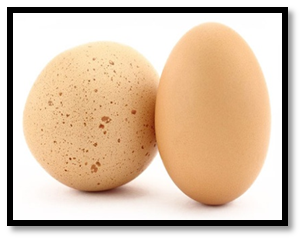EGG SHELL DISORDER: THEIR CAUSES AND CONTROL
Egg shell disorders are a significant concern in poultry farming, affecting egg quality, hatchability, and profitability. These disorders manifest as abnormalities in egg shell formation, texture, or integrity, leading to increased breakage, reduced marketability, and economic losses for poultry producers.
India is 3rd largest producer of eggs in the world. It is considered as one of the most nutritious and economical animal food proteins available in country. Broken and poor egg shell qualities are responsible for major economic loss to the poultry farmer.
There are many factors which affecting the meat and egg quality. Some of these can directly affect the egg production, especially the eggshell. Altered shell structures are an indication of the infectious or non infectious disease and also help to determine causes that affecting a poultry farms. EGG SHELL DISORDER
EGG DEVELOPMENT PROCESS
Egg development is the 20 to 25hrs long process take place inside the reproductive organ of laying birds. Birds have only one functional ovary the left one. When young pullet reaches the 20weak of age then yolk is released from the ovary and received by infundibulum, it remains here for 15min. Then moves down into the magnum where inner and outer shell membrane are added along with water and minerals salts. After spending 3hrs in this process it moves down to isthmus, where albumen is added around the yolk. This process takes about an hour. Next the partly formed egg moves into the uterus, or shell gland, where it receive shell layer. After 21hrs later egg passes through the vagina and lay outside takes only one minute.
SOME COMMON TYPE OF EGG SHELL DISORDER
- Misshaped egg shell- These eggs are too small or large or differ from normal shapes.
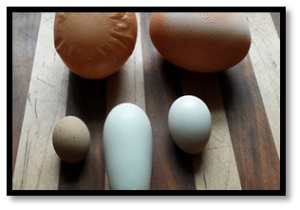
Causes: Immature shell gland, Stress, Overcrowding, Avian Influenza, Newcastle disease, infectious bronchitis, Egg Drop Syndrome 76.
- Soft shell egg- Laid with an incomplete shell, only a thin layer of calcium is deposited on the shell membrane.
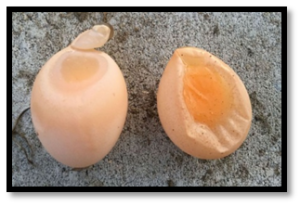
Causes: Excessive phosphorus consumption, heat stress, bird age (older hen), saline water supply, mycotoxins.
- Shell less egg- Laid without a shell layer, these eggs are protected only by the shell membrane.
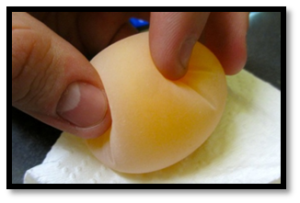
Causes: Immature shell gland, Avian Influenza, Newcastle Disease, infectious bronchitis, Egg Drop Syndrome 76, Inadequate nutrition, Calcium, increased phosphorus, manganese, or vitamin D3.
- Dispigmented egg –The degree of brown color in the egg shell is determined by the quality of deposited pigment in the cuticle.
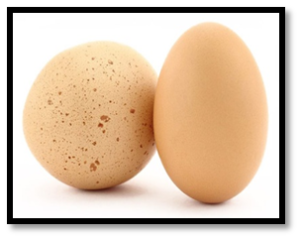
Causes: Infectious bronchitis, Bird age (older hen), High stress in the flock, Egg Drop Syndrome 76, Use of chemotherapeutic agents (i.e. sulfonamides and nicarbazin).
- Flat /slab sided egg- eggs are flattened at the side because 2ndegg entered inside uterus whereas 1st one is still not laid.
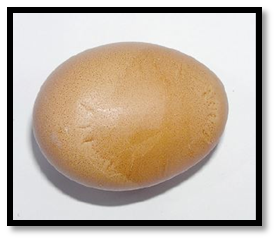
Causes- infectious bronchitis, Stress, frights and disturbances, Overcrowding in coop/run, Sudden increase in daily light hours.
- Wrinkled eggshell- Eggs with thinly creased and wrinkled surfaces.
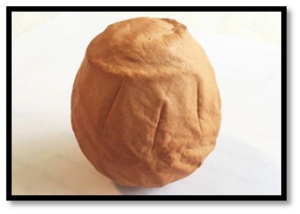
Causes: Stress, Infectious bronchitis, Defective shell gland, Overcrowding.
- Corrugated egg– Corrugated appearance of shell. This is a product of double ovulation, and the shell formation is disturbed.
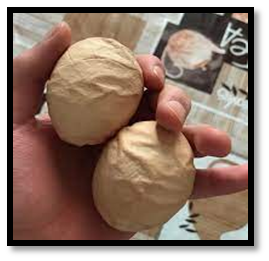
Causes-Extra large egg size, Newcastle disease, Infectious Bronchitis, excessive use of antibiotics, copper deficiency in the hen’s diet, Excess calcium, a defective shell gland.
- Calcium deposit- An extra layer of calcium can be seen all over the egg or on just one end.
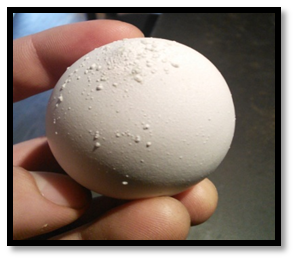
Causes: Defective shell gland, Disturbances during calcification, Excess calcium in the diet.
- Blood on egg shell- Usually from pullets in early lay, eggs are contaminated by smears of blood from a prolapsed cloaca, vent pecking, or cannibalism.
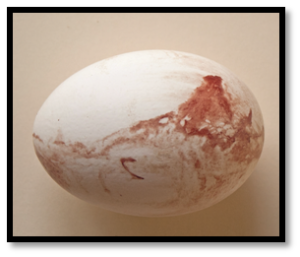
Causes: Overweight pullets, Pullets coming into lay, sudden increases in day length, Poor hygiene, Cage trays, Belt pick-up system.
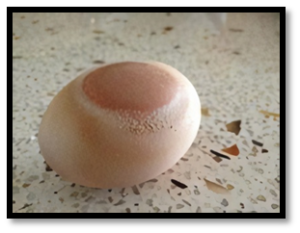
White banded egg
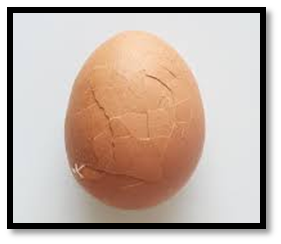
Cracked shell egg
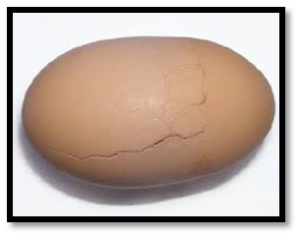
Broken and mended
- White banded egg- If two eggs come into contact with each other in the shell gland pouch, normal calcification is interrupted. The first egg retained in the pouch will have an extra layer of calcium seen as the white band marking.
Causes: Stress, Changes in lighting.
- Cracked shell egg- This problem includes hair line cracks, star cracks, or large cracks that result in a hole in the shell.
Causes: Heat stress, Saline water, Bird age (older hen), inadequate nutrition, Calcium and vitamin D3, mycotoxins.
- Broken and mended-The egg shell got cracked during the calcification process and mended just before being laid.
Causes- Stress, frights or disturbance during the calcification process.
Analysis of Factors Affecting Eggshell Quality and Countermeasures
In the management of laying hens, eggshell quality is a very important evaluation management indicator in addition to egg production rate. Eggshell quality is an important indicator to measure the performance of a breeder farm and laying farm. The poor quality of eggshells can bring great hidden losses to chickens, especially breeders, which breed with breeders. The hatching rate, hatching rate, quality of chicks and fresh egg production of commercial laying hens are closely related to economic benefits.
Therefore, it is of great practical significance to classify abnormal eggs and analyze the various factors that cause abnormal eggs to understand and understand the factors affecting the quality of eggshells and take corresponding measures.
1 Common abnormal eggs 1.1 The surface of eggshells is mainly caused by certain viral diseases (such as the sequelae of infectious bronchitis) due to the shrinkage and roughness of the surface due to calcium deposition. Symptoms, and other reasons may cause the eggshell to break and rupture in the eggshell gland during the egg formation process. This damage is partially repaired, but a bulge is formed in the central area where the egg is severely damaged (the equatorial region bulges). 10 to 14 hours before the egg is laid, the various stress reflexes of the flock will also lead to an increase in the production of wrinkled eggs.
1.2 Thick shell eggs Compared with soft shell eggs, due to excessive calcium deposition, calcium spots appear on the surface of the egg shell or thick shell eggs are produced. This is often the case with primiparous hens due to the long residence time of the eggs in the eggshell glands. In addition, before the laying hens lay eggs, any stress or disturbance caused by different degrees of heat, noise, etc. may cause the egg to stay in the eggshell gland for a long time to form a thick shell egg.
1.3 soft shell egg soft shell eggshell thickness is thinner than normal eggs, also known as thin shell eggs. Soft shell eggs appear to be mainly a lack of mineral elements that form eggshells, mainly calcium and vitamin D. It mainly occurs in older chickens. Because of the long-term high-yield calcium output, it can not meet the needs of eggshell synthesis, so the soft-shelled eggs are more common in the late laying period. The primiparous chickens stay in the eggshell gland due to eggs. It takes a long time to produce thick shell eggs and soft shell eggs. The imbalance of feed calcium and phosphorus or uneven feed, manganese deficiency in feed is also easy to cause nutritive soft shell eggs; soft shell gland function also affects the secretion of calcium, and other mycotoxin poisoning and certain viral diseases such as Newcastle disease are causing The genital tract is damaged and the function disorder is also prone to a certain proportion of soft-shelled eggs. The flocks cause abnormalities in the reproductive system, neurological disorders, calcium secretion due to shocking stress reflexes, resulting in a certain degree of soft shell eggs.
1.4 Shellless Eggs Shellless Fingers Eggs wrapped only in soft egg membranes In some cases, there will be two eggs in the eggshell gland at the same time, which will form a thick shell egg, like a target or a thumb. This problem can also lead to the production of “slender” eggs. There are other star-shaped thick shell eggs, including those with eggshell or sandpaper on the surface of the eggshell.
1.5 After the shell egg is produced, it is not cautious and easy to be damaged during the process of collection, division registration or transportation. Capillary cracks are the most difficult to identify. Usually, due to the contact between eggs and hard objects, it is more difficult to identify fresh eggs. It is necessary to have certain operational experience under the ideal conditions. Star-shaped cracks are visible under normal light, and can be seen under candlelight from the damaged area of the center point, usually caused by a collision between eggs and eggs. The split-hole egg is mainly caused by the poultry itself or by the sharp contact with the egg. When the egg is formed, the egg has cracks in the hen body, so there are more eggshell deposits on the crack, which leads to the uneven eggshell and the uneven eggshell, which is a “check egg” that is weaker than the normal egg. . Yin and Yang eggs may have a certain relationship with factors such as variety or heat stress, and the specific reasons are inconclusive.
2 Factors affecting the quality of eggshells There are many factors affecting the quality of eggshells, most of which are before laying eggs. The length of eggshell formation will also affect the quality of the eggshell. The specific influencing factors are as follows.
2.1 Genetic factors are affected by heredity. Some strains of poultry will deposit calcium faster. For example, the quality of dark brown eggshell is better than that of light brown eggshell.
2.2 Days of age As the age of laying hens increases, eggshell thickness usually decreases.
Older hens produce larger eggs, which are also easy to break.
There are two main reasons for this: First, from a genetic point of view, hens can only deposit a certain amount of calcium on the eggshell. The bigger the egg, the worse the quality.
Second, after 40 weeks of age, the hen’s absorption and metabolism of calcium gradually deteriorated, and it was reduced to less than 50%. Loss of the ability to mobilize calcium from the bone does not produce the desired calcium carbonate.
2.3 Disease factors Some diseases such as Newcastle disease, avian influenza, infectious bronchitis, and egg-producing diseases can affect the quality of eggshells. Infectious bronchitis can cause hens to produce soft shells, thick shell eggs, light-colored thin shell eggs or produce sand-shell eggs. The egg-producing syndrome virus affects the uterus of the fallopian tube, causing the surface quality of the eggshell to deteriorate and less affecting other reproductive organs. Avian influenza, Newcastle disease, infectious bronchitis and other diseases have an impact on all parts of the reproductive system.
2.4 Daily management If the temperature of the poultry house is high or the culture environment is poor, it will affect the quality of the eggshell. It is necessary to grasp the moulting period to improve the quality of the eggshell. Measures to force moulting or induce moulting have been shown to improve the quality of laying eggs for hens of all ages. Usually after the moulting, the eggshell weight, egg specific gravity, shell thickness and shell percentage will be improved. The egg rupture strength of each line of chickens was enhanced after induction of moulting.
2.5 External factors and stress The temperature of the house is too high, the feed intake of the chickens is insufficient, the quality of the eggs is decreased, the high frequency causes the respiratory frequency of the laying hens to increase, the blood CO2 content is lowered, the blood pH value is increased, and the eggs are formed. Corresponding reduction of calcium in the shell causes “respiratory alkalosis”, resulting in poor eggshell quality. The acid balance is broken and the number of soft shell eggs increases in summer. “Respiratory alkalosis” also leads to an increase in carbonate loss through the kidneys, competition for carbonate ions in the kidneys and uterus, resulting in a decrease in eggshell thickness. Under heat stress, the activity of carbonic anhydrase in the chicken body decreased, and the activity of vitamin D3 decreased, which caused the eggshell quality to decrease. Sulfonamides can affect the quality of the eggshell, and tetracycline is beneficial for improving the quality of the eggshell. The eggshell is formed by the active cells of the fallopian tube and the uterus. When the stress occurs, the acidic secretion causes the active cell to be injured or damaged, reducing its activity. In severe cases, the stress will cause excessive deposition of calcium on the surface of the eggshell to form a lot of powder. Point, produce malformed eggs.
2.6 Nutritional factors that have a greater impact on eggshell quality are mainly calcium, phosphorus and vitamin D3. The balance of calcium and phosphorus plays a crucial role in determining the thickness and strength of the eggshell. 94% of the eggshell is calcium carbonate and one egg contains about 2.5g of calcium. Therefore, each laying hen needs to eat at least every day. 4.3 g of calcium. The quality of the excess phosphorus in the feed will decrease, and the amount of phosphorus will decrease. The effective amount of 0.3% to 0.35% of the available phosphorus in the feed will produce the best egg quality and eggshell quality. The level of calcium in the intestine is closely related to the absorbability of the calcium source. Phosphorus is easily absorbed at a pH of 5.5 to 6.0, while the absorption is significantly decreased at a pH above 6.5. Excessive levels of calcium and phosphorus in the intestine will reduce the absorption of both. The ratio of calcium to phosphorus is the most suitable ratio of 1.5 to 2.0. Vitamin D3 plays a key role in the absorption and metabolism of calcium. Vitamin D3 itself has no activity and must be converted into calcium glycol or calcitriol to exert its hormonal effects on calcium absorption. This process is done in chicken liver and kidney. Factors affecting these organs also affect vitamin D3 production, affecting the absorption and metabolism of calcium.
High levels of calcium and phytate phosphorus in the diet reduce the utilization of trace elements such as magnesium and zinc, and phytase or non-starch polysaccharides can be added to improve eggshell quality. Dietary low anion and cation balance, non-starch polysaccharides, toxins and contaminants can also lead to a decline in eggshell quality. 3 Measures to improve the quality of eggshells are based on the analysis of infectious disease factors or non-infectious disease factors, and then take targeted measures.
3.1 The decline in eggshell quality caused by infectious diseases mainly includes diseases such as Newcastle disease, avian influenza and infectious bronchitis. The decline in eggshell quality caused by infectious diseases is difficult to recover quickly in the short term, and some will last for one to two months. After the onset of laying hens, relying solely on the addition of drugs or improving the feed has little effect. Some diseases can try hunger therapy or forced moulting. Prevention and immunization of infectious diseases must be done in the daily feeding process.
Appropriate vaccine strains should be selected at appropriate time for immunization and remission of Newcastle disease and avian influenza infectious bronchitis.
3.2 Management and nutritional factors to ensure that the effective intake of calcium in the feed increases the retention time of the body, in addition to ensure that the calcium feed particle size of 8 to 12 mesh is suitable for absorption; control the effective phosphorus content and the appropriate calcium Phosphorus ratio, the ratio of calcium to phosphorus in laying hens is maintained at about 0.4%, more than 0.45% will cause calcium deficiency, and the ratio of calcium to phosphorus is better at (4-6):1; proper vitamin D3 is added. 2,000 to 2,500 IU per kg of feed; vitamin C can promote thyroid function and increase calcium absorption. 250 mg of vitamin C is added per kg of feed, which has a certain increase in egg production and eggshell quality. When the weather is hot, adding 1% sodium hydrogencarbonate (NaHCO3) to the feed can improve the quality of the eggshell. The addition of tetracyclines in the feed, such as oxytetracycline and chlortetracycline, has a certain effect on the quality of the eggshell. Adding a certain amount of trace elements such as manganese, zinc and magnesium can improve the quality of the eggshell. Add at least 70g of manganese, zinc or slightly higher amount of magnesium per ton of feed. The content of magnesium in the calcium source in the middle and late stages of egg production must be as low as possible; Add trace element amino acid complexes to improve eggshell quality. For example, aspirin can be added with a certain amount of aspirin to reduce the body temperature of the chicken, thereby reducing the problem of poor eggshell quality caused by heat stress.
In some areas, the culture process should pay attention to the problem of high salt (chlorine ion) in the water. The qualified chicken farm can use the purified water equipment. In the summer, certain measures should be taken to reduce the temperature and maintain a good breeding environment. Regularly check the egg size, specific gravity, and eggshell thickness on time, and make a record. If any changes are found, find the cause and correct it in time.
FACTORS THAT AFFECTING THE EGG SHELL QUALITY
- Bird Age–Egg shell strength/thickness decreases as hens get older. Because Egg size increases with increasing hen age at the same time as shell weight stays the same.
- Young age- At early age of birds, eggs can be fragile because the eggshell mineralization process is not yet fully efficient.
- Nutritional deficiency- Deficiency ofcalcium, vitamin D, insufficient water supply, increase level of phosphorus in feed also causes the defect in egg shell.
- Disease condition – Various kind of disease like Infectious Bronchitis, Egg Drop Syndrome, Avian Influenza, Mycoplasma gallisepticum etc disease compromises the health of the bird may result in defective eggs with drop in production.
- Heat Stress –High temperature and hot water can reduce the feed intake of birds and limits the availability of blood calcium for egg shell formation. Along with long light exposure in winter may reduce the egg shell quality.
- General Stress –high population density and rough handling of birds increases the stress level as a result white- banded egg shell, slab- sided egg, misshapen eggs etc incidence occurs.
CONTROLING MEASURE TO PREVENT EGG SHELL DISORDER –
- Feed suppliments-adequate supply of minerals and vitamins improve eggshell quality in layers. Vitamin D is necessary for calcium metabolism, Vitamin C help to relive stress condition. Minerals like calcium, phosphorus prevent the demineralization of bone of birds; sodium bicarbonate supplementation during heat stress may improve egg shell quality.
- Water supply-water should not be “softened” or treated with lime, resins, salts, or chelating agents before supply to birds. Provision of cool drinking water during summer seasoncan alleviates the effects of heat stress.
- Vaccination programme –regularly immunization programs are important to prevent the impact of infectious diseases that affect poultry houses.
- Biosecurity-Good biosecurity practices are an important factor to minimize the incidence of disease outbreaks in poultry farms.
- Good management-Management plays an important role in the prevention of egg shell quality. Avoid overcrowding, handle with care can reduce the stress or heat stress of birds.
CONCLUSION-
As seen above many factors can affect egg shell quality and egg internal quality. An awareness of factors allows an egg producer to monitor eggs and optimize egg quality. Good management and best practice with respect to bird husbandry like feeding, careful egg collection, handling and processing all contribute to the quality of the final product.
Egg shell disorders pose significant challenges for poultry producers, impacting egg quality, hatchability, and profitability. By understanding the causes, impacts, and control measures for egg shell disorders, poultry farmers can implement effective management strategies to minimize their occurrence and mitigate their adverse effects. Nutritional management, environmental control, disease prevention, and genetic selection are key components of a comprehensive approach to egg shell disorder management. Through proactive management practices and continuous improvement efforts, poultry producers can enhance egg shell quality, optimize production efficiency, and meet the expectations of consumers for high-quality eggs.
Compiled & Shared by- This paper is a compilation of groupwork provided by the Team, LITD (Livestock Institute of Training & Development)
Image-Courtesy-Google
Reference-On Request


